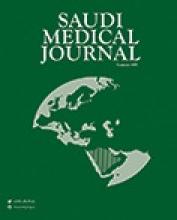Abstract
OBJECTIVE: This paper aims to consider the available mortality data as an insight to epitomize the mortality pattern and the main leading causes of death specific to the Easter Mediterranean Region (EMR) in order to set priorities for future research in the region.
METHODS: Data was taken from the last 3 World Health Organization (WHO) mortality statistics. Crude mortality rates were compared between the 6 WHO regions for the years 1998, 1999 and 2000. Proportional mortality and standardized proportional mortality ratios were calculated for the causes of death and types of malignant neoplasm deaths and compared between the EMR and the other regions of the world. Spearman coefficient rank-order correlation was calculated to detect significant correlation between the ranking of the main causes of death in EMR and the 3 basic demographic, socio-economic and health care indicators in the 6 regions of the world.
RESULTS: The results of this study showed that approximately 9 per 1,000 of the world's population die annually. Africa and Europe have the highest mortality rates. The main causes of death worldwide are cardiovascular diseases, infectious or parasitic diseases, malignant neoplasm, infectious respiratory diseases and other respiratory diseases. In EMR, approximately 8 per 1,000 die annually. The causes of death in EMR can be classified into 3 categories. 1) Non-prominent in EMR as compared to other regions of the world. 2) Prominent in EMR and significantly correlated to the basic indicators. 3) Prominent in EMR but not related to the basic indicators. These include deaths due to wars, congenital anomalies, perinatal conditions, genitourinary diseases, endocrine disorders, road traffic accidents, cancer bladder, lymphoma leukemia.
CONCLUSION: The results of this study emerged the need for extensive epidemiological studies to investigate thoroughly the main causes of death influencing mortality in EMR, specially that they coincide with the health consequences of depleted uranium. Also, most of these health conditions were previously described among the United States and European veterans who served in the Gulf War.
- Copyright: © Saudi Medical Journal
This is an open-access article distributed under the terms of the Creative Commons Attribution-Noncommercial-Share Alike 3.0 Unported, which permits unrestricted use, distribution, and reproduction in any medium, provided the original work is properly cited.






